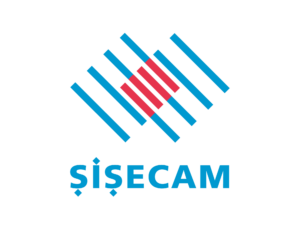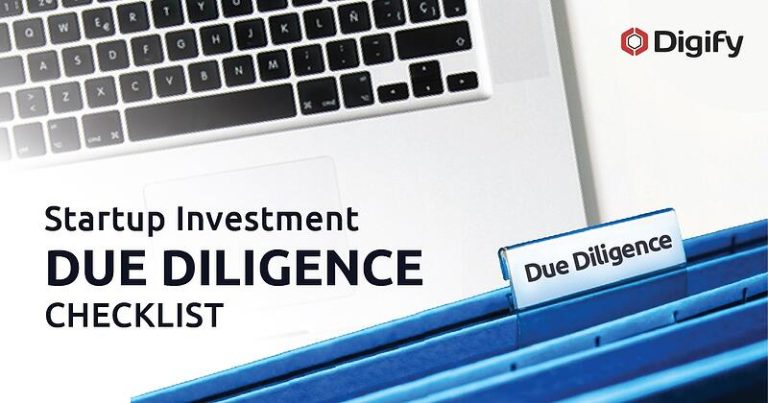Erfahren Sie, wie Sie einen virtuellen Datenraum auswählen, der Sie für einen erfolgreichen Due-Diligence-Prozess bei Investitionen rüstet.
Wenn Sie auf der Suche nach einer Serie-A-Finanzierung sind, haben Sie bereits einen wichtigen Meilenstein erreicht. Laut einer aktuellen Studie erreichen weit weniger als die Hälfte der Startups, die erfolgreich eine Seed-/Angel-Finanzierung erhalten, jemals die Serie-A-Phase.

Aller Wahrscheinlichkeit nach haben Sie es bis hierher geschafft, weil Sie es sich verdient haben. Sie haben ein solides Geschäftsmodell. Sie haben eine Reihe wichtiger strategischer Partnerschaften geschlossen. Sie haben eine ehrgeizige Markteinführungsstrategie erfolgreich umgesetzt. Ihr Produkt oder Ihre Dienstleistung findet bereits Anklang. Und Sie haben gezeigt, dass Sie skalierbar sind. Um weiteres Wachstum zu finanzieren, benötigen Sie jedoch institutionelle Mittel, und dafür müssen Sie institutionelle Investoren gewinnen. Um diesen erfahrenen Risikokapitalgebern zu beweisen, dass Sie tatsächlich so weit gekommen sind, müssen Sie Ihr wertvollstes geistiges Eigentum einem anspruchsvollen Due-Diligence-Prozess unterziehen. Es versteht sich von selbst, dass Sie bei jedem Fehler in diesem hochsensiblen Unterfangen Gefahr laufen, Ihre wertvollsten Vermögenswerte zu gefährden. Diese könnten sogar in die Hände eines Konkurrenten gelangen.
Um dieses allzu häufige Dilemma zu lösen, benötigt jedes Start-up, das in diesem Jahr eine Serie-A-Investitionsrunde durchläuft, einen hochsicheren, cloudbasierten Arbeitsbereich, der speziell für die Organisation und den Versand sensibelster und vertraulichster Daten konzipiert ist: einen virtuellen Datenraum (VDR).
Früher reisten wichtige Stakeholder oder deren Vertreter in der Regel zu einem physischen Datenraum und durchforsteten dort persönlich sensible Dokumente, was für alle Beteiligten mit hohen Kosten verbunden war. Da sich jedoch Online-Tools für die Zusammenarbeit und Cloudspeicher in den letzten fünf Jahren rasant verbessert haben, hat der virtuelle Datenraum seinen physischen Vorgänger schnell als neuen Industriestandard abgelöst.
Wie IBISWorld hervorhebt, gibt es bei Risikokapitalgesellschaften (sowie Anwaltskanzleien und Private-Equity-Firmen) deutliche Anzeichen dafür, dass sie in den nächsten Jahren weiterhin „von physischen Datenräumen weg“ und hin zu VDRs übergehen werden. Virtuelle Datenräume sind definitiv zu einem wichtigen Bestandteil des Due-Diligence-Prozesses geworden.
Die Elemente eines professionellen VDR
Im Gegensatz zu anderen Cloud-basierten Lösungen unterscheiden sich virtuelle Datenräume erheblich in ihren Funktionen, ganz zu schweigen von ihren unterschiedlichen Verpflichtungen in Bezug auf Qualität und Sicherheit. Sehen wir uns also die wichtigsten Elemente genauer an, auf die Sie bei der Auswahl eines professionellen VDR achten sollten:
Die Fähigkeit, Hunderte von sensiblen Dokumenten zu organisieren und sicher zu versenden
Viele Startups konzentrieren sich verständlicherweise eher auf äußere Gewinne als auf die interne Organisation. Die Startup-Finanzierung auf institutioneller Ebene erfordert jedoch eine neue, strengere Denkweise. Insbesondere der Due-Diligence-Prozess bei Investitionen zwingt selbst die erfolgreichsten Startups dazu, ihre Angelegenheiten schnell in Ordnung zu bringen. Startup-Gründer und ihre Teams haben keine andere Wahl, als sich zumindest für einige Monate schnell von Visionären zu detailorientierten, akribischen Archivaren zu wandeln.
Um alle Anforderungen einer gründlichen Due Diligence für Investitionen zu erfüllen, muss das Startup-Team strenge branchenübliche Formate für die Indizierung von Dateien mit ihren digitalen Assets in einem VDR befolgen. So entmutigend dies auch klingen mag, es ist durchaus machbar, solange Sie frühzeitig beginnen und einen intuitiven, professionellen VDR wählen, der Sie voranbringt. Achten Sie beim Vergleich von VDR-Lösungen auf einige wesentliche Organisationsmerkmale, wie beispielsweise eine Datei-Index-Funktion, mit der Benutzer mit den entsprechenden Berechtigungen Dateien im Datenraum neu anordnen können, um eine optimale sequenzielle Anzeige zu gewährleisten.
Compliance- und Sicherheitsgarantien
Aus technischer Sicht ist es wichtig, dass jeder in Frage kommende VDR-Anbieter die höchsten Compliance- und Sicherheitsstandards für den Umgang mit sensiblen Daten im Internet erfüllt. Insbesondere sollte der VDR-Anbieter mehrere Rechenzentren auf verschiedenen Kontinenten mit redundanten Datenkopien nutzen.
Darüber hinaus sollten die Rechenzentren selbst nicht nur über fortschrittliche biometrische und Schlüsselkartenkontrollen verfügen, sondern auch rund um die Uhr physisch bewacht werden. Der VDR-Anbieter sollte außerdem die folgenden allgemein anerkannten Datensicherheitsstandards erfüllen:
-
- 256-Bit-AES-End-to-End-Verschlüsselung
-
- ISO-27001 (Sicherheitsstandard für digitale Assets)
-
- HIPAA-Konformität
Leistungsstarke Zugriffskontrolle
Wenn es um Ihre sensibelsten Dokumente geht, ist die Möglichkeit, den Zugang zu widerrufen, genauso wichtig wie die Möglichkeit, ihn zu gewähren. Obwohl es schwierig ist, verlässliche Statistiken über die Anzahl der Investitionsgeschäfte zu finden, die während der Due Diligence scheitern, sollten Sie auf alle Eventualitäten vorbereitet sein.
Dementsprechend sollte die Zugriffskontrolle Ihres VDR flexibel sein, sodass Benutzer hinzugefügt und entfernt werden können, wenn neue Investoren hinzukommen oder andere ausscheiden. Die besten VDR-Lösungen ermöglichen Ihnen die Automatisierung des Entfernungsprozesses, indem Sie ein Ablaufdatum für den Zugriff neuer Empfänger festlegen. In jedem Fall sollten die Zugriffskontrollen Ihres VDR Ihnen die Möglichkeit bieten, den Zugriff auf individueller oder rollenbasierter Ebene (z. B. Mitbesitzer/Mitwirkender/Betrachter) einfach und sofort zu gewähren oder zu widerrufen.
Kapazität für die Verwaltung einer unbegrenzten Anzahl von Empfängern und Räumen
Unbegrenzte Anzahl von Empfängern
Als Start-up, das Risikokapital beschafft, müssen Sie damit rechnen, mindestens ein oder zwei Dutzend Risikokapitalgeber anzusprechen. Dementsprechend sollte Ihr virtueller Datenraum Ihnen die Möglichkeit bieten, den Zugang für eine große Anzahl von Personen und Investmentteams über einen längeren Zeitraum zu verwalten. Wenn Sie eine VDR-Lösung finden, die eine unbegrenzte Anzahl von Datenempfängern zulässt, ist dies umso besser, da Sie sich dann keine Gedanken über eine Obergrenze machen müssen.
Unbegrenzte Anzahl von Räumen
Die meisten VDR-Lösungen konzentrieren sich auf die Verwaltung mehrerer (oder sogar unbegrenzter) Empfänger. Einige VDR-Lösungen gehen jedoch noch weiter und ermöglichen es Ihnen, mehrere (und sogar unbegrenzte) Datenräume von einem einzigen Konto aus zu erstellen und zu verwalten. Dies ist eine äußerst nützliche und leistungsstarke Funktion, die Sie unbedingt in Ihre Liste der Must-haves aufnehmen sollten.
Erweiterte Funktionen
Zugriffskontrolle, sicheres Hosting und End-to-End-Verschlüsselung sind unverzichtbare Grundvoraussetzungen für jede Lösung für virtuelle Datenräume. Heutzutage geht ein professioneller virtueller Datenraum jedoch weit über diese Grundvoraussetzungen hinaus und umfasst eine integrierte Verwaltung digitaler Rechte mit äußerst flexiblen Sicherheitsoptionen.
Wenn Sie beispielsweise einem vorläufigen, unverbindlichen Investor widerwillig Zugriff auf Ihren VDR gewähren, möchten Sie möglicherweise die Möglichkeit haben, dessen Zugriff auf Ihre sensibelsten Dokumente zum Drucken oder Herunterladen einzuschränken. In den meisten Fällen werden Sie jedoch wahrscheinlich verhindern wollen, dass Investoren Kopien Ihrer Dokumente erstellen können. Achten Sie daher bei jeder VDR-Lösung, für die Sie sich entscheiden, auf eine erweiterte Kopierschutzfunktion.
Weitere erweiterte Funktionen, auf die Sie bei einem professionellen VDR achten sollten, sind einfaches Hochladen/Importieren mehrerer Dateien, anpassbare Wasserzeichen und eine integrierte NDA. Idealerweise sollte die Funktion zum Hochladen/Importieren mehrerer Dateien nahtlos in die allgemeine Cloudspeicher-Lösung Ihres Unternehmens (z. B. Google Drive, Dropbox) integriert sein. Die Wasserzeichen-Funktion sollte wiederum Wasserzeichen auf beliebig viele ausgewählte Dokumente gleichzeitig anwenden. Die integrierte NDA ist zwar nicht immer notwendig, aber dennoch ein taktvolles Hilfsmittel. Schließlich werden die meisten VCs während des Pitching-Prozesses weder eine separate NDA unterzeichnen noch es schätzen, dazu aufgefordert zu werden.
Benutzerfreundliche Einrichtung und intuitive Benutzeroberfläche
In den kommenden Jahren, in denen Investoren weiterhin zu immer größeren Transaktionen übergehen, wird der Due-Diligence-Prozess nur noch komplexer und anspruchsvoller werden.

Um diesem Trend zur zunehmenden Komplexität entgegenzuwirken, sollte die von Ihnen gewählte Lösung für virtuelle Datenräume äußerst benutzerfreundlich und intuitiv sein. Dies gilt sowohl für die Einrichtung des VDR als auch für seine Datenverwaltungsschnittstelle. Als Faustregel gilt, dass die Einrichtung des virtuellen Datenraums für Ihr Team nicht länger als eine Stunde dauern sollte.
Darüber hinaus sollte der VDR niemals die Installation von Software/Plugins durch die Benutzer erfordern. Ein cloudbasierter VDR sollte außerdem rund um die Uhr verfügbar sein und eine hohe Verfügbarkeit garantieren. Ohne diese benutzerfreundlichen Funktionen in Ihrer gewählten VDR-Lösung werden potenzielle Investoren unweigerlich frustriert sein, da ihr Zugriff durch Software-/Plugin-Anforderungen, eine umständliche Benutzeroberfläche und einen unzuverlässigen Cloud-Server verlangsamt wird.
Umfassende Funktionen, aber erschwinglich
Hochsichere und spezialisierte Lösungen, wie professionelle VDRs, kosten mehr als allgemeine Lösungen für Verbraucher wie Dropbox. Doch während Dropbox vielleicht die grundlegenden Anforderungen einiger Seed- oder Angel-Investoren erfüllt, ist ein echter virtueller Datenraum für ein Series-A-Investmentteam unverzichtbar. Es gibt jedoch einen Unterschied zwischen einem erschwinglichen VDR, der seinen Preis rechtfertigt, und einem überteuerten VDR, der dies nicht tut. Sie sollten nur für das bezahlen, was Sie auch benötigen.
Der beste Weg, um einen erschwinglichen, optimierten VDR von einem überteuerten, überladenen VDR zu unterscheiden, ist, jeden Anbieter zu testen. Die meisten VDR-Anbieter bieten Ihnen eine kostenlose Testversion an, die Sie zur Bewertung der verschiedenen Optionen nutzen können. Natürlich müssen Sie bei einigen Anbietern erst einen langwierigen Verkaufsgespräch durchstehen, bevor Sie Zugriff auf die kostenlose Testversion erhalten. Bei anderen können Sie sich glücklicherweise innerhalb von Sekunden anmelden.
Schneller, freundlicher Support
Sofern Sie und Ihr Team nicht bereits in der Vergangenheit eine institutionelle Finanzierungsrunde abgeschlossen haben, ist dies möglicherweise das erste Mal, dass Sie einen virtuellen Datenraum einrichten und verwalten. Daher werden Sie sicherlich Fragen haben, ebenso wie Ihre potenziellen Investoren. Um diese Fragen schnell zu beantworten, muss Ihr VDR zwei wichtige Supportkanäle bieten: ein sofort nutzbares Ressourcenzentrum und einen zeitnahen Support. Wenn der VDR-Anbieter, den Sie in Betracht ziehen, einen dieser wichtigen Supportkanäle nicht bietet, sollten Sie sich vielleicht nach einem anderen Anbieter umsehen.
Dashboard mit Nutzungsstatistiken
Eine der besten Möglichkeiten, den Fortschritt eines Investitionsgeschäfts zu messen, ist die Verfolgung der Aktivitäten in Ihrem Datenraum. Die meisten potenziellen Investoren haben weder die Zeit noch die Neigung, Sie jedes Mal zu informieren, wenn sie ein von Ihnen bereitgestelltes Dokument einsehen. Ein professioneller VDR liefert Ihnen jedoch detaillierte Nutzungsstatistiken auf einen Blick, die Ihnen genau diese Informationen liefern und Ihnen gleichzeitig Einblick in die Aktivität (und damit das potenzielle Interesse) jedes einzelnen Investors geben.
Wie uns der CEO und Geschäftsführer von Sapphire Ventures in Erinnerung ruft, „kann man seinen VC nicht feuern, wenn etwas schief geht“. Vor diesem Hintergrund bieten Ihnen Statistiken zur Nutzung Ihres VRC eine einmalige Gelegenheit, Ihre potenziellen Investoren zu bewerten, genauso wie diese Sie bewerten.
Ein Archiv für die Zukunft
Sobald die Serie-A-Investitionsrunde abgeschlossen ist, können Sie die Daten für spätere Referenzzwecke archivieren. Möglicherweise erweisen sie sich bei späteren Investitionsrunden als nützlich, worauf wir in künftigen Beiträgen eingehen werden. Andererseits können Sie Ihren VDR auch auf unbestimmte Zeit live lassen. Schließlich ist der virtuelle Datenraum, wie ein VC bemerkt, nicht nur für Investoren gedacht, sondern auch für Sie:
„Der Datenraum ist zwar für Investoren nützlich, aber er ist auch ein Archiv für alle Ihre sensibelsten und vertraulichsten Materialien.“
Die Wahl des richtigen VDR für die Due Diligence der Serie A
Bei der Auswahl eines Datenraums für die Due Diligence der Serie A ist es entscheidend, eine Lösung zu finden, die Effizienz, Sicherheit und Benutzerfreundlichkeit vereint. Hier finden Sie eine kurze Übersicht über die wesentlichen Elemente, auf die Sie bei einem virtuellen Datenraum achten sollten:
Sichere und skalierbare Dokumentenverwaltung
- Möglichkeit zur sicheren Speicherung und Verwaltung von Hunderten (oder idealerweise unbegrenzten) sensiblen Dokumenten hundreds (or ideally unlimited) sensitive documents
- Kapazität zur Verwaltung einer unbegrenzten Anzahl von Datenempfängern über mehrere Datenräume hinweg
Erstklassige Compliance- und Sicherheitsstandards
- Stellen Sie sicher, dass der VDR die höchsten Standards erfüllt:
- HIPAA-Konformität
- 256-Bit-AES-End-to-End-Verschlüsselung
- Sichere Infrastruktur zum Schutz sensibler Daten
Erweiterte Funktionen
Ein professioneller VDR zeichnet sich durch wichtige Funktionen aus, wie z. B.:
- Druck- und Download-Beschränkungen, um unbefugte Weitergabe zu verhindern
- Robuster Kopierschutz zum Schutz sensibler Dokumente
- Massen-Upload/Import von Dokumenten für eine schnellere Einrichtung
- Anpassbare Wasserzeichen für zusätzliche Sicherheit und Rückverfolgbarkeit
- Integrierte NDR (Non-Disclosure Agreement) zur Vereinfachung der Einhaltung gesetzlicher Vorschriften
Einfache und intuitive Benutzererfahrung
- Die Einrichtung sollte weniger als eine Stunde dauern – ohne komplizierten Onboarding-Prozess
- Erschwingliche Preise – Sie sollten nicht für auffällige Funktionen bezahlen müssen, die Sie nicht benötigen
- Kostenlose Testversionen sollten leicht zugänglich sein
Intelligente Statistiken und Support
- Ein benutzerfreundliches Dashboard sollte Folgendes bieten:
- InvestVerfolgung der Investorenaktivitäten zur Einschätzung des Interesses
- Einblick, auf welche Dokumente zugegriffen wird
- Schneller und zuverlässiger Kundensupport, einschließlich:
- Ressourcencenter zur Selbsthilfe
- Zeitnaher Support für sofortige Hilfe
Mehr als Due Diligence
Ein guter VDR ist nicht nur für Due Diligence geeignet – Sie sollten ihn auch für andere geschäftliche Anforderungen wiederverwenden können. Weitere Informationen zur Auswahl eines VDR für den allgemeinen Gebrauch finden Sie in unserem vollständigen Leitfaden.












